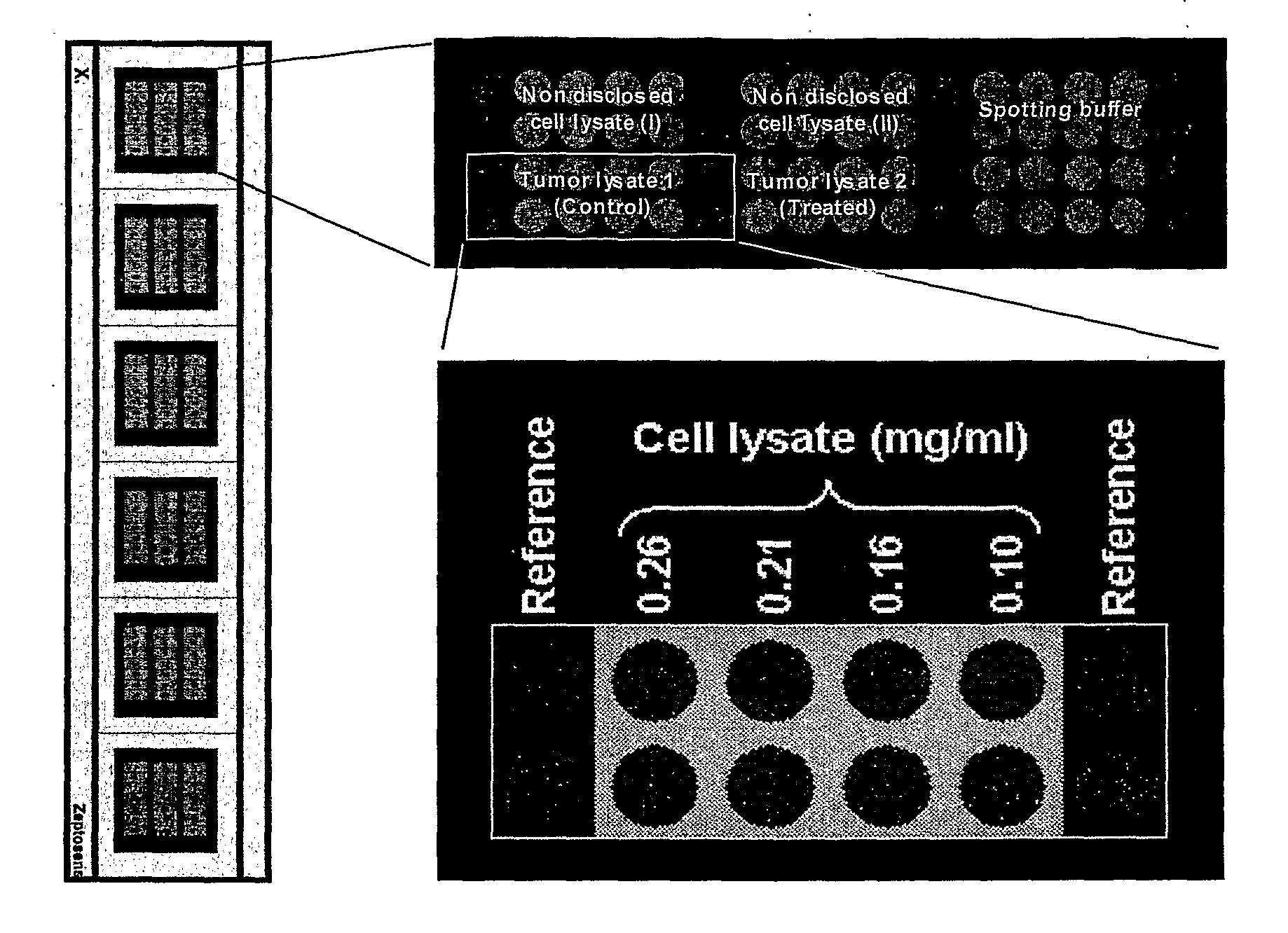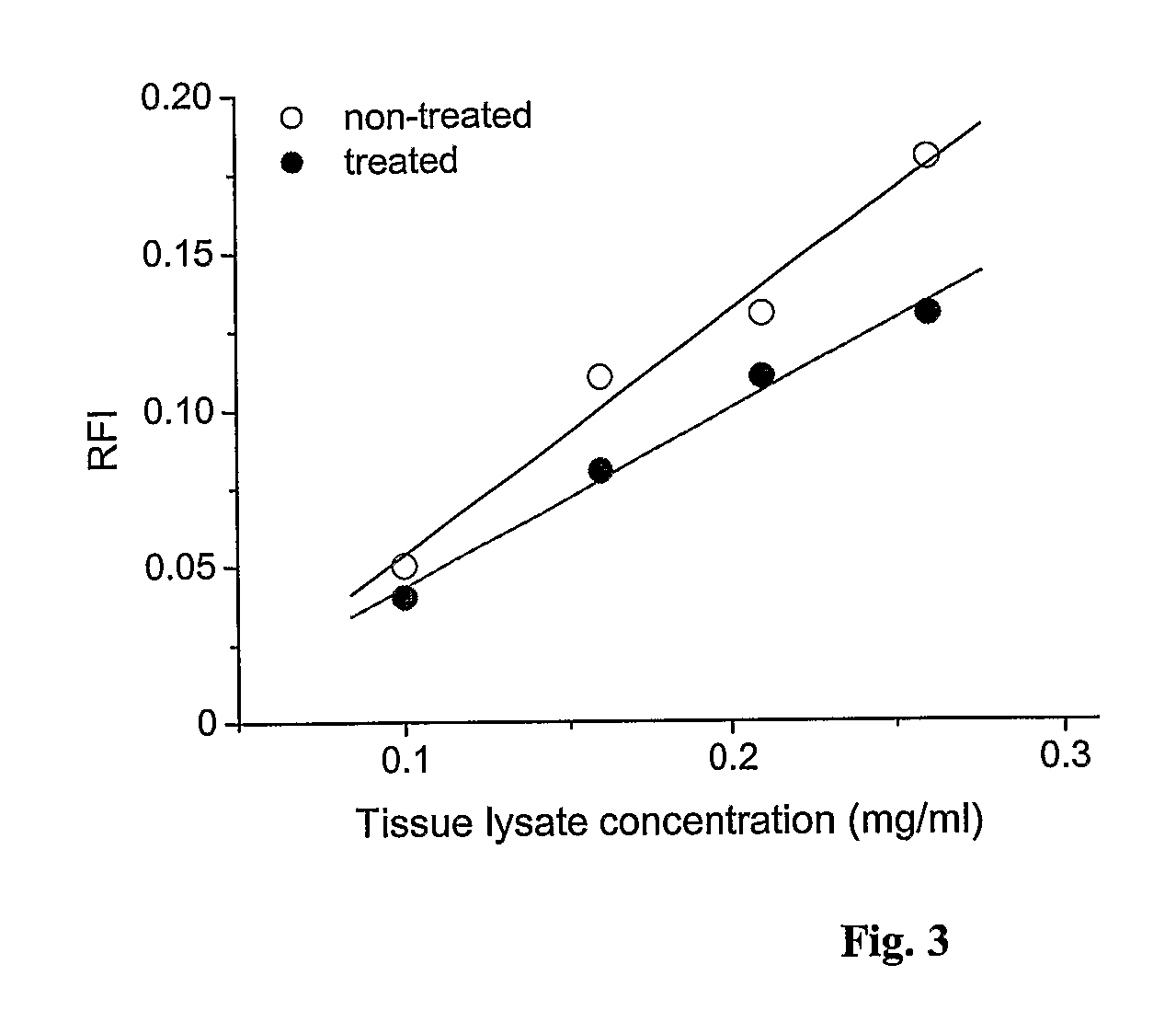Analytical Platform and Method for Generating Protein Expression Profiles of Cell Populations
a cell population and protein expression technology, applied in combinational chemistry, biochemistry apparatus, chemical libraries, etc., can solve the problems of laborious steps, hardly guaranteed 100% regeneration, and relatively complex manufacture of proteins
- Summary
- Abstract
- Description
- Claims
- Application Information
AI Technical Summary
Benefits of technology
Problems solved by technology
Method used
Image
Examples
example
[0169] 1. Materials
[0170] 1.1. Tissue Lysate Samples
[0171] Two different tissue lysates were used for which differential protein expression profiles should be established. The lysates had been obtained from cell sub-populations that had been derived from a common cell population: Cancerous tissue (=common cell population) had been divided into two cell sub-populations that had then been cultivated independent from each other. One of them was subjected to no further treatment and was used to generate a control sample (“tumor lysate 1”). The other cell sub-population was treated chemically and then used to generate a second lysate sample (“tumor lysate 2”). The samples had the following characteristics:
TissueTreatmentProtein concentration1. Colorectal cancer:None (control)2.9 mg / ml“Tumor lysate 1”2. Colorectal cancer:Chemotherapy2.6 mg / ml“Tumor lysate 2”
[0172] Protein concentrations were determined according to a modified Bradford test, using a PIERCE Coomassie Plus-Kit (see secti...
PUM
| Property | Measurement | Unit |
|---|---|---|
| thickness | aaaaa | aaaaa |
| thickness | aaaaa | aaaaa |
| thickness | aaaaa | aaaaa |
Abstract
Description
Claims
Application Information
 Login to View More
Login to View More - R&D
- Intellectual Property
- Life Sciences
- Materials
- Tech Scout
- Unparalleled Data Quality
- Higher Quality Content
- 60% Fewer Hallucinations
Browse by: Latest US Patents, China's latest patents, Technical Efficacy Thesaurus, Application Domain, Technology Topic, Popular Technical Reports.
© 2025 PatSnap. All rights reserved.Legal|Privacy policy|Modern Slavery Act Transparency Statement|Sitemap|About US| Contact US: help@patsnap.com



